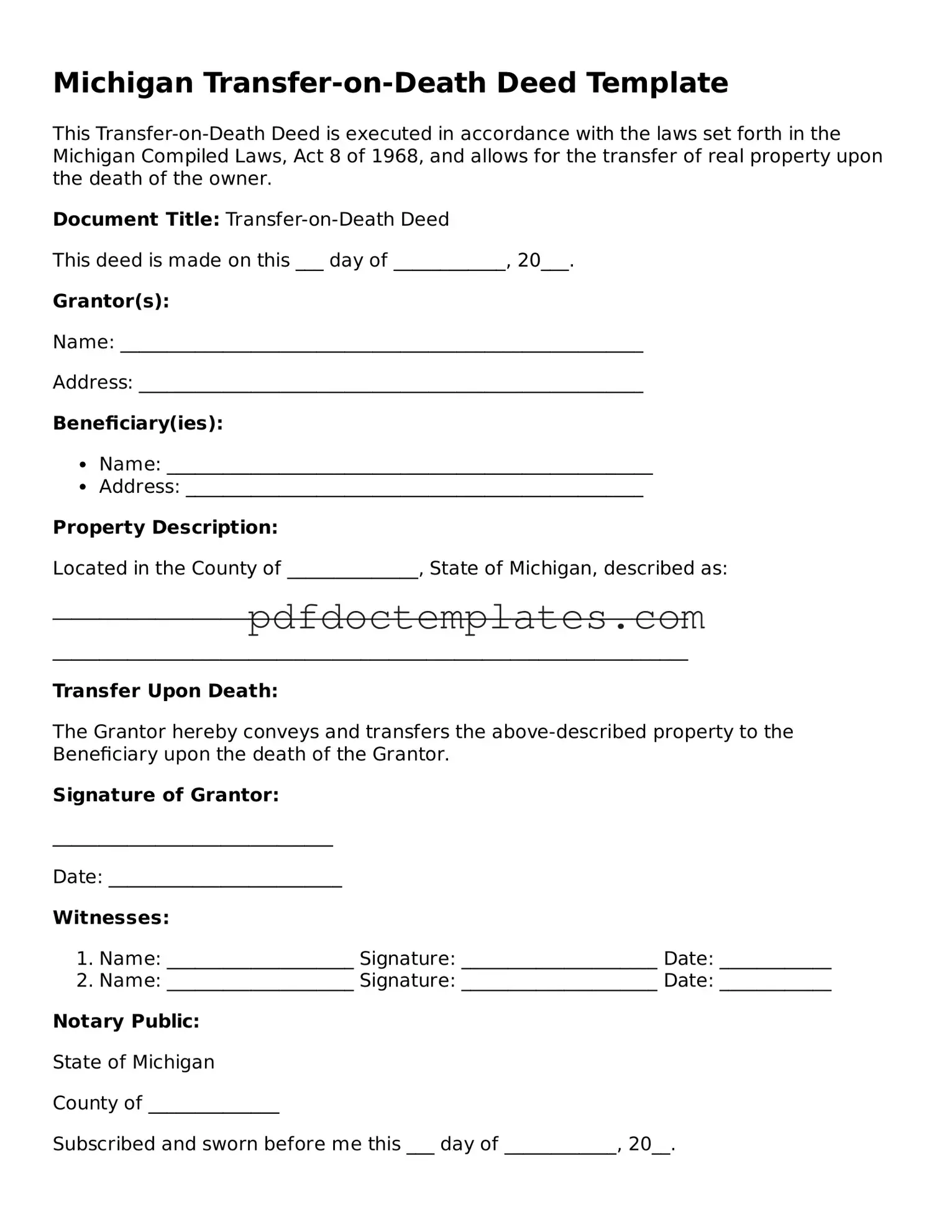Michigan Transfer-on-Death Deed Template
This Transfer-on-Death Deed is executed in accordance with the laws set forth in the Michigan Compiled Laws, Act 8 of 1968, and allows for the transfer of real property upon the death of the owner.
Document Title: Transfer-on-Death Deed
This deed is made on this ___ day of ____________, 20___.
Grantor(s):
Name: ________________________________________________________
Address: ______________________________________________________
Beneficiary(ies):
- Name: ____________________________________________________
- Address: _________________________________________________
Property Description:
Located in the County of ______________, State of Michigan, described as:
____________________________________________________________________
____________________________________________________________________
Transfer Upon Death:
The Grantor hereby conveys and transfers the above-described property to the Beneficiary upon the death of the Grantor.
Signature of Grantor:
______________________________
Date: _________________________
Witnesses:
- Name: ____________________ Signature: _____________________ Date: ____________
- Name: ____________________ Signature: _____________________ Date: ____________
Notary Public:
State of Michigan
County of ______________
Subscribed and sworn before me this ___ day of ____________, 20__.
______________________________
Notary Public
My commission expires: _______________
Instructions for Use:
- Complete all sections of this deed.
- Secure signatures from two witnesses.
- Have a notary public witness the execution of this deed.
- Record the deed with the county register of deeds to ensure the transfer is valid upon the Grantor's death.
